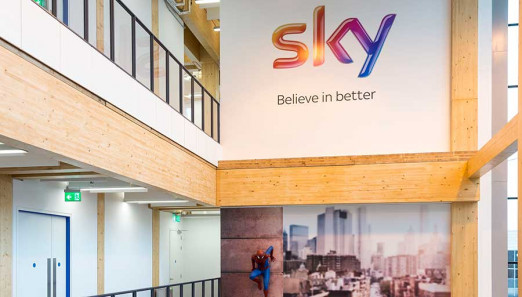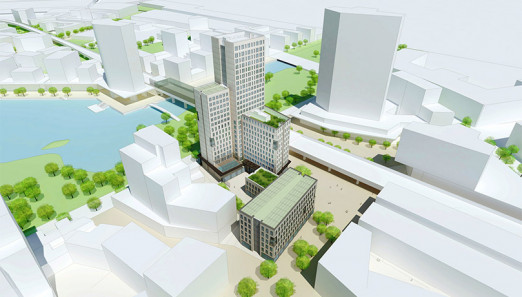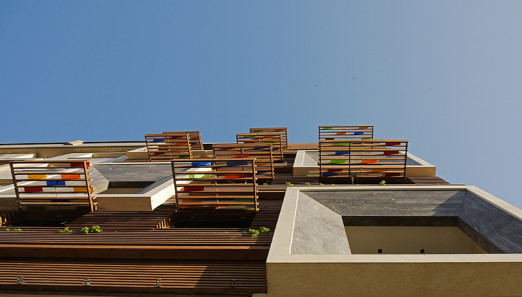Timber is one of the oldest known building materials.
Hand in hand with human development, this amazing material and our ability to use it has been continuously evolving, in terms of stability, resistance, design and application. Nowadays, ages after the first prehistoric wooden huts, wood is still at the core of the construction sector, offering exciting and innovative opportunities to architects and specifiers.
The secret of wood lies in its inner qualities: strength, durability and flexibility. Timber elements can be easily shaped and modified without losing their characteristics; can be prefabricated and assembled off site; are lightweight and can be easily connected; are renewable and recyclable.
In short, they allow revolutionary ideas to become reality.
Think about some of the most innovative trends within the Construction industry: lightweight skyscrapers, custom housing, offsite construction, passivhaus buildings, 3D printed surfaces & components – and you will discover that timber industry is leading the way.

Dundon Passivhaus by Prewett Bizley Architects [courtesy of Wood Awards 2015]
The Balehaus project, an initiative between White Design and the University of Bath to create new homes in Bristol, is a good example of this.
The method used prefabricated glulam timber frame filled with straw under pressure with lime render to make an entirely natural and thick walling for the homes – resulting in a level of insulation that could reduce fuel bills by up to 90 per cent.
Innovative timber frame projects are booming all around the world.
Examples include the ‘HoHo building' in Vienna, a 24-storey building 75 per cent made of wood, to be erected by 2017, the Stockholm 34-storey Wooden Skyscraper designed by architect CF Møller, and Michael Green’s proposed 35-storey timber tower, part of Baobab project in Paris.
Closer to the ground, we can find another stunning use of timber in construction: housing containers. Last autumn The Building Centre in London hosted ‘A New House for London’, a perfectly habitable shipping container designed by Arup, Carl Turner Architects, CBMM and The Building Centre, that helped trigger the debate on alternative housing solutions in the UK.

‘A New House for London’ by Arup, Carl Turner Architects & CBMM [courtesy of The Building Centre]
“Concrete is a 20th-century material. Steel is a 19th-century material. Wood is a 21st-century material”.
All of these developments in materials and construction techniques have led UK architect Andrew Waugh, to announce “the beginning of the timber age”. The same optimism also permeated dRMM co-founder Alex de Rijke’ words when he highlighted that “concrete is a 20th-century material. Steel is a 19th-century material. Wood is a 21st-century material”.
If you are keen on innovative solutions and low carbon economy as I am, this “wind of change” – Scorpions forgive me! - across the Construction Industry is simply great!
Luckily I am not the only one to “believe in timber”.
Timber’s market share as a building material has been on the rise for a number of years, particularly in the construction of new homes where the use of timber frame has grown from just over 14 per cent in 2001 to approaching a quarter of today’s market.
According to the latest report by the Structural Timber Association (STA), timber frame is expected to account for 27% of new housing by 2017. Improvements are especially evident in offsite methods which have dramatically reduced build times – in some cases by as much as 14 weeks.
Timber frame has also been adopted as a mainstream method by large scale operations and construction companies like Barratt Development plc.
Obviously this “new wave” in timber construction is not just good news on the architecture and market development sides, but for the environment too. The problem is that timber’s true trump card – its environmental credentials – has historically been hard to evidence.
That’s why we have to repeat again and again that trees require little more than sunlight and water to grow, while the processing and manufacturing of timber products need only very low energy inputs compared to other materials or manufactured products. Timber is a highly efficient, low-energy, low-carbon manufacturing chain.
Timber products also have exceptional insulating qualities, helping keep our homes naturally warm.
Finally trees absorb carbon dioxide as they grow and store carbon in wood. This carbon is then stored indefinitely until end of life. In fact, trees are so good at absorbing and storing carbon dioxide, and the energy use is so low in manufacturing, that our LCA analysis shows that most timber products arrive on site with a negative carbon footprint. That is, more carbon dioxide is absorbed and stored in the timber than is emitted during the manufacturing process.
Roughly one tonne of carbon is stored for every metre cubed of timber used; this means that, if we built 200,000 new houses in timber, it would store around 4 million tonnes of carbon dioxide every year!
That would help the UK tackle its housing shortage and achieve its carbon reduction targets in one shot!
With this in mind, Wood for Good has just launched its 2016 Housing Campaign focused on the opportunities and benefits from timber construction. At the same time Wood for Good has teamed up with the Forestry Commission, Exova and Wood Campus to deliver a package of professional training courses, useful for architects and construction industry professionals, throughout 2016. These courses are running every month all over the UK. For more details visit: http://woodforgood.com/education/
Possibilities are huge and UK architects and specifiers are ready to seize the opportunity.
The oldest building material is now returning as the most innovative, fashionable and still the best.
David Hopkins
Managing Director, Timber Trade Federation
 David is the Managing Director of the Timber Trade Federation and member of the Board of Wood for Good, the timber industry communications campaign.
David is the Managing Director of the Timber Trade Federation and member of the Board of Wood for Good, the timber industry communications campaign.
David also worked as Executive Director at Wood for Good for 4 years, leading the award winning ‘Wood First’ & ‘Building with Carbon’ campaigns. He helped develop the timber industry lifecycle assessment database, and focused on putting timber’s low carbon properties at the front of the national agenda.
He is a regular speaker at industry conferences and events, most recently promoting timber’s role in a low-carbon economy to policy makers at the European Parliament.






